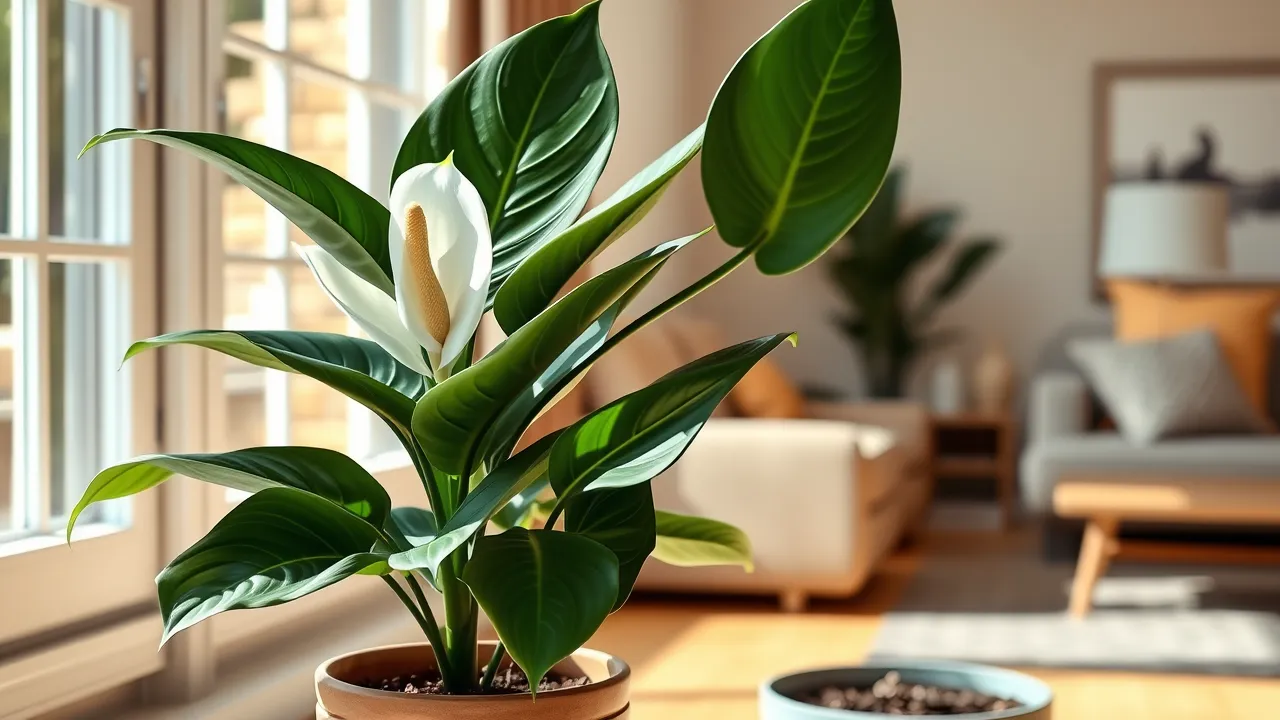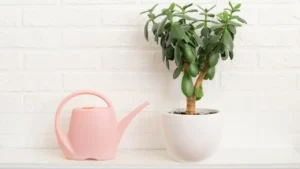Few houseplants capture the elegance and tranquility of the Peace Lily (Spathiphyllum spp.) as effectively as this beloved indoor companion. Known for its striking white blooms and glossy, dark green leaves, the Peace Lily is a favorite among both novice and seasoned gardeners. Beyond its beauty, this plant is renowned for its air-purifying qualities, making it a natural addition to any home or office environment.
As someone who has spent over two decades nurturing, propagating, and teaching about plants, I can confidently say that the Peace Lily is as rewarding as it is forgiving. Its adaptability to indoor conditions and relatively simple care requirements make it a staple in interior horticulture. In this article, we will explore everything from its botanical background to detailed care instructions, ensuring your Peace Lily thrives for years to come.
Table of Contents
Peace Lily Overview
The Peace Lily is a perennial flowering plant belonging to the Araceae family. Unlike many flowering plants, it produces elegant white spathes (modified leaves) that surround the tiny flower clusters known as spadices. These blooms, paired with lush foliage, make the Peace Lily a showstopper in indoor settings.
Native to the tropical rainforests of Central and South America, the plant naturally thrives in shaded, humid environments with rich, well-drained soils. Its natural resilience allows it to adapt remarkably well to indoor life, making it ideal for both homes and offices. Beyond aesthetics, Peace Lilies contribute to healthier indoor air by removing toxins such as formaldehyde, benzene, and ammonia.
Peace Lily Quick Care
| Feature | Description |
|---|---|
| Scientific Name | Spathiphyllum spp. |
| Common Name | Peace Lily |
| Native Region | Central and South America |
| Light Requirements | Low to bright indirect light |
| Watering Needs | Keep soil consistently moist, avoid soggy soil |
| Propagation | Division or stem cuttings |
| Toxicity | Toxic to pets and humans if ingested |
| Growth Rate | Moderate; 12-36 inches per year indoors |
| Ideal Temperature | 65-85°F (18-29°C) |
Peace Lily Requirements
| Feature | Description |
|---|---|
| Hardiness | USDA Zones 10-12 (indoors in cooler zones) |
| Climate Zones | Tropical/subtropical |
| Plant Type | Perennial indoor flowering plant |
| Plant Family | Araceae |
| Plant Genus | Spathiphyllum |
| Season of Interest | Blooming occurs in spring and summer |
| Height | 12-36 inches (30-90 cm) indoors |
| Spread | 12-24 inches (30-60 cm) |
| Spacing | 12-18 inches between plants |
| Depth | Planting depth should match root ball |
| Maintenance | Low to moderate |
| Soil Type | Well-draining, loamy soil |
| Soil PH | Slightly acidic to neutral (5.8-6.5) |
| Soil Drainage | Excellent; avoid waterlogged conditions |
How to Care for Peace Lily
1. Peace Lily Light Requirements
Peace Lilies thrive in low to medium indirect light. Too much direct sunlight can scorch the leaves, causing unsightly brown tips. On the other hand, insufficient light will reduce blooming and slow growth. For optimal flowering, place your Peace Lily near a north or east-facing window or under filtered sunlight. Fluorescent lighting can also support growth indoors, making this plant ideal for offices.
2. Peace Lily Watering
The key to Peace Lily care is consistent moisture. Water when the top inch of soil feels dry to the touch. Overwatering can lead to root rot, while underwatering may cause drooping leaves. A helpful tip is to use room-temperature water and avoid using softened water, which may contain salts harmful to the plant.
3. Peace Lily Soil
Peace Lilies prefer a well-draining, nutrient-rich potting mix. A blend of peat moss, perlite, and pine bark works exceptionally well. The soil should retain moisture without becoming soggy, ensuring roots receive both oxygen and hydration. Avoid garden soil or heavy clay mixes, as they can suffocate roots.
4. Pot for Peace Lily
Choose a pot with drainage holes to prevent water accumulation. Ceramic or plastic pots work fine, but ensure there is a saucer to catch excess water. The pot size should allow room for growth without overwhelming the plant, usually 1-2 inches larger than the current root ball.
5. Repotting Peace Lily
Repotting should be done every 1-2 years or when roots outgrow the container. Spring is the ideal time to repot, as the plant is actively growing. Carefully remove the plant, prune any dead or damaged roots, and place it in fresh potting mix. Repotting not only refreshes nutrients but also encourages fuller growth.
6. Peace Lily Temperature
Peace Lilies thrive in temperatures between 65-85°F (18-29°C). They are sensitive to cold drafts and sudden temperature changes, which can cause leaf damage or shock. Avoid placing the plant near air conditioners or drafty windows during winter months.
7. Peace Lily Humidity Requirement
As tropical plants, Peace Lilies prefer high humidity. Indoor air, especially during winter, can be dry, causing brown leaf tips. Increase humidity by misting the leaves, using a humidity tray, or placing a humidifier nearby. Bathrooms and kitchens with indirect light can also provide naturally higher humidity.
8. Peace Lily Pruning
Regular pruning keeps the plant healthy and aesthetically pleasing. Remove yellowing or brown leaves by cutting them at the base. Spent flowers should also be trimmed to encourage new blooms. Always use sterilized scissors to prevent the spread of disease.
9. Peace Lily Fertilizer
Fertilize your Peace Lily every 6-8 weeks during the growing season (spring and summer) using a balanced, water-soluble fertilizer. Avoid over-fertilizing, as this can lead to leaf burn and inhibit flower production. A diluted solution (half-strength) is often safer and more effective.
10. Peace Lily Pests and Diseases
Peace Lilies are relatively pest-resistant but can occasionally attract spider mites, aphids, and mealybugs. Wipe leaves with a damp cloth and use insecticidal soap if infestations occur. Overwatering is the most common cause of disease, particularly root rot and fungal infections. Proper drainage and good air circulation prevent most issues.
Conclusion
The Peace Lily is more than just a decorative houseplant; it is a symbol of serenity and care. Its lush foliage, striking blooms, and air-purifying abilities make it a must-have for any indoor space. With the right light, water, and soil conditions, this plant can thrive for many years, rewarding you with elegance and freshness.
As a gardener with over 20 years of experience, I have witnessed countless Peace Lilies flourish when given attentive care and the proper environment. Remember that consistency is key—regular watering, occasional feeding, and the occasional pruning session will keep your plant vibrant and healthy. Whether you are a beginner or a seasoned plant parent, the Peace Lily offers both beauty and ease of care, proving that with the right knowledge, any plant can flourish indoors.
Embrace the calming presence of the Peace Lily, and let it transform your home into a lush, green sanctuary.










